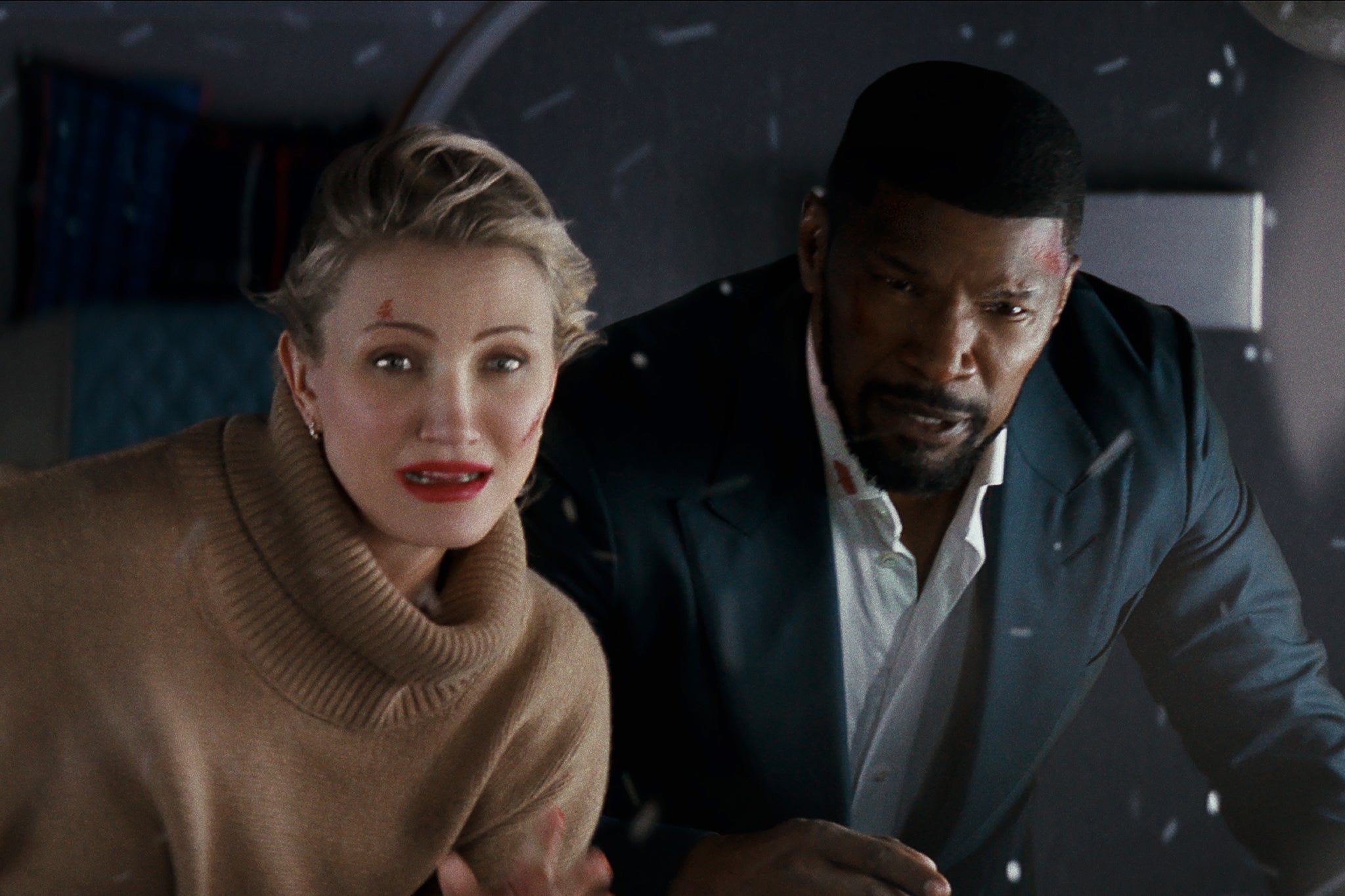It is funny that in the same week that the Oscar-tipped epic The Brutalist was engulfed in a controversy about its (relatively minor) use of AI, audiences were presented with the first entirely AI-generated movie! Or at least what you imagine an entirely AI-generated movie would be: Netflix’s shiny, sterile Back in Action, a film so dismayingly soulless that it could mark a new low in Hollywood creativity.
Why Cameron Diaz chose this to be her first film in a decade is just one of the many mysteries kicked up by Back in Action, which is currently sitting atop Netflix’s Top 10 list. Others include: “When did Andrew Scott forget how to act?”; “What karmic debt does Glenn Close owe Netflix on the heels of this, The Deliverance and Hillbilly Elegy?”; and “What is the rate of return for a straight-to-streaming blockbuster that rented out the Tate Modern for an action setpiece, then staged a combined speedboat and motorbike chase along the Thames?”
Mainly, though, you’re left wondering why any real sense of style or creative vigour has dropped out of films like these, with their devotion to standard action genre plot tropes and faint duplication of older, better movies. Back in Action casts Diaz and Jamie Foxx as a spy couple who unexpectedly get pregnant and decide to go off-grid, only for their past to catch up with them – and their clueless-to-their-parents’-old-jobs children – 15 years later. A rotation of nondescript bad guys wants hold of “The Key”, a MacGuffin of such criminal vagueness that it may as well have been called “The Object” or “The Thingamajig”. See, in the wrong hands The Key can drain entire city blocks of power, and only Foxx’s character knows where The Key is hidden.
Diaz and Foxx, with kids in tow, hightail it to London to seek protection from Diaz’s mother, a wealthy ex-spy played with a curiously erratic English accent by Close. She, meanwhile, is in a relationship with an eccentric Brit played in peak “Jack Whitehall-coded comic relief” mode by Stath Lets Flats’s Jamie Demetriou. And all of these characters soon find themselves pursued not only by an MI6 spy (Scott, crushingly vacant) but also by a CIA operative played by Friday Night Lights’s Kyle Chandler, one of the greatest American TV stars of the Noughties, here reduced to delivering stern reams of exposition in between gunfights.
Typically, the combined star power in Back in Action should be able to compensate for everything else. But there is no crackle between Foxx and Diaz, two charismatic, dependable movie stars who nonetheless operate on different comic wavelengths – he the cocky smart alec, she the sunny free spirit. And it’s debatable whether the pair were even together most of the time. Foxx was hospitalised during filming after experiencing a near-fatal stroke, meaning a body double was used in a number of scenes that he was unable to shoot. That might explain why the camera so consistently cuts between static shots of his and Diaz’s individual heads, as if to paper over the fact that they weren’t in the same place.
It’s all depressingly tossed together, crudely edited and almost impressively unfunny. But maybe that’s the point. A recent report in the arts magazine n+1 claimed that Netflix bosses have been asking screenwriters to make sure their characters “announce what they’re doing so that viewers who have [the] programme on in the background can follow along”. They allegedly want “casual viewing” content, meaning things you don’t really have to pay attention to. Back in Action is more or less this in practice: a collection of sounds, images and explosions, stripped of characters or jokes. It’s a vague approximation of moviemaking, to be watched between swipes of your phone, or while untangling plug cables in your living room.

Back in Action certainly isn’t the first of its kind to feel like this – between Netflix, Prime and Apple TV+, there is now an entire subgenre of speedily forgotten movies in which Ryan Reynolds types tangle with beautiful women armed with pistols and sass, from the Chris Evans/Ana de Armas flop Ghosted to the Mark Wahlberg/Halle Berry actioner The Union. But Back in Action feels the most egregious, perhaps because it stars an actor quite literally beamed in from a very different era in film production. Even Diaz’s worst movies had a sense of style to them, or a feeling that people were actively trying to make something halfway decent. Knight & Day, her Back in Action-style globetrotting caper with Tom Cruise, was released 15 years ago, and its gags, stuntwork and general spectacle feel almost herculean in comparison to the thrifty nothingness of her new film.
The biggest worry here, though, is not that a film like Back in Action is phoning it in, but that it – and films like it – are rewiring our understanding of what these kinds of movies are. An era of “casual viewing” shouldn’t mean lowered expectations, or cut corners, or rote storytelling. Action movies can be better. Should be better. And, up until very recently, really were better. If films are to survive amid a deluge of content fighting for our collective attention spans, effort must be made. All Back in Action does is twist the knife in further.
‘Back in Action’ is streaming on Netflix










